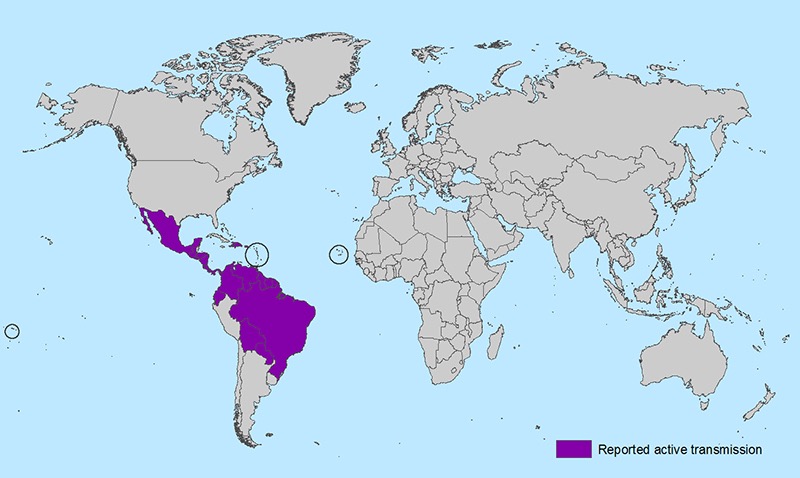A pregnant woman can undergo fetal screening for certain birth defects during her pregnancy. Birth defects may be caused by problems with genes, chromosomes, or exposure to certain agents. However, 70% of birth defects have no known cause.
Prenatal screening tests can show whether you are at high risk or low risk of having a baby with a particular disorder.
If the screening test shows that you are high risk for a birth defect, a diagnostic test will have to be done to determine if your baby actually has the disorder.
Here are some screening tests which can help determine your baby’s risk of having a birth defect.
Prenatal Screening Tests
| Screening Test |
Test Type |
What Does It Screen For? |
Detection Rate |
| Combined first trimester screening (11-13 weeks gestational age) |
Blood test plus an ultrasound exam |
Trisomy 21
Trisomy 13
Trisomy 18 |
82–87% |
| Second trimester single screen for neural tube defects (14-16 wga) |
Blood test |
Neural tube defects |
85% |
| Second trimester quad screen (15-20 wga) |
Blood test |
Trisomy 21
Trisomy 18
Neural tube defects |
81% |
| Integrated screening |
Blood and an ultrasound exam in the first trimester, followed by quad screen in the second trimester |
Trisomy 21
Trisomy 18
Neural tube defects |
94–96% |
| Panorama Screen also known as cell free fetal DNA test (>10 wga) |
Blood test that looks at fetal DNA in mother’s blood |
Trisomy 21
Trisomy 13
Trisomy 18
Neural tube defects
Sex chromosome abnormalities
Microdeletions |
>99% |
Glossary
- Trisomy:
- a condition in which there is an extra chromosome.
- Monosomy:
- a condition in which there is a missing chromosome.
- Trisomy 13:
- Patau syndrome is a genetic disorder characterized by heart defects and other developmental problems. Most affected infants die within the first year of life.
- Trisomy 18:
- Edwards Syndrome is a genetic disorder that causes serious mental and developmental problems. Most affected infants die within the first year of life.
- Trisomy 21:
- Down Syndrome is a genetic disorder in which abnormal features of the face and body, medical problems such as heart defects, and intellectual disability occur.
- Monosomy X:
- Turner Syndrome is a condition affecting females in which there is a missing or damaged X chromosome. It causes a webbed neck, short height, and heart problems.
- Neural Tube Defect:
- Birth defects of the brain, spine, or spinal cord. The most common neural tube defects are spina bifida and anencephaly. In spina bifida, the fetal spinal column doesn’t close completely. In anencephaly, most of the brain and skull do not develop.
Information adapted from ACOG Patient Information FAQ 165
Smart phones are an inescapable part of modern life. They are convenient and increase efficiency in many areas. Here are some apps that we here at Women’s Healthcare Specialists of North Texas may help improve your health and quality of life.*
My Pregnancy Today App and Contraction Timer
iOS | Android

Period Tracker
iOS | Android

Pill Reminder by Drugs.com
iOS | Android

Red Cross First Aid App
iOS | Android

Omvana Meditation App
iOS | Android

MyFitnessPal – Calorie and Fitness Tracker App
iOS | Android

* Medical health and lifestyle apps are no substitute for personalized medical advice. If you have medical questions or concerns, please contact your healthcare provider.
Don’t panic. A pap smear is a screening test for cervical cancer and pre-cancer. The pap test is usually done in conjunction with an HPV test. There are many causes of abnormal pap smears, and most can be managed in the office. Once your test comes back abnormal, your provider reviews the test results and decides on a plan of action.
What are the different types of abnormal pap test results?
- Atypical squamous cells of undetermined significance (ASC-US)—ASC-US means that changes in the cervical cells have been found. The changes are almost always a sign of an HPV infection. The changes may also be a result of infection or inflammation. ASC-US is the most common abnormal Pap test result.
- Low-grade squamous intraepithelial lesion (LSIL)—LSIL means that the cervical cells show changes that are mildly abnormal. LSIL usually is caused by an HPV infection that often goes away on its own.
- High-grade squamous intraepithelial lesion (HSIL)—HSIL suggests more serious changes in the cervix than LSIL. It is more likely than LSIL to be associated with pre-cancer and cancer.
- Atypical squamous cells, cannot exclude HSIL (ASC-H)—ASC-H means that changes in the cervical cells have been found that raise concern for the presence of HSIL.
- Atypical glandular cells (AGC)—Glandular cells are another type of cell that make up the thin layer of tissue that covers the inner canal of the cervix. Glandular cells also are present inside the uterus. An AGC result means that changes have been found in glandular cells that raise concern for the presence of pre-cancer or cancer.
What testing is done after an abnormal result?
- Colposcopy with or without cervical biopsy—Colposcopy is an in office exam of the cervix with a magnifying device. If an area of abnormal cells is seen, your health care provider may decide that a cervical biopsy is needed. For a biopsy, the health care provider removes a small sample of tissue and sends it to a lab for testing. The lab tests can determine whether abnormal cells are present and, if so, how severe.
- Endocervical sampling – A small brush or other instrument is used to take a tissue sample from the cervical canal.
- Endometrial sampling— In the case of an AGC result, a sample of the endometrium (the lining of the uterus) may be collected for study using an instrument which looks like a small straw.
What are the potential results of the biopsy?
- Cervical intraepithelial lesion (CIN) is used to report cervical biopsy results. CIN is graded as 1, 2, or 3.
- CIN 1 is used for mild (low-grade) changes in the cells that usually go away on their own without treatment.
- CIN 2 is used for moderate changes.
- CIN 3 is used for more severe (high-grade) changes.
- Moderate and high-grade changes can progress to cancer. For this reason, they may be described as “pre-cancer,” and are usually treated.
How are abnormal cervical cells treated?
- Loop electrosurgical excision procedure (LEEP)—A thin wire loop that carries an electric current is used to remove abnormal areas of the cervix. This procedure can be done in the office or in the operating room.
- Conization—A cone-shaped piece of the cervix that contains the abnormal cells is removed. This procedure must be done in the operating room.
These procedures are usually curative. Once complete, patients are asked to come in for a follow up visit two weeks after the procedure to review pathology results and to form a plan for future testing.
Information adapted from ACOG Patient Information FAQ 187
What is the Zika virus?
- Zika virus is transmitted to humans through the bite of an infected Aedes species mosquito. Aedes mosquitoes are aggressive daytime biters and feed both indoors and outdoors. They can also bite at night.
- Only one in five people who are infected with the virus will show any symptoms. Symptoms are usually mild and include mild fever, rash, muscle and joint pain.
Why should I be concerned?
- Zika virus can be transmitted from a pregnant mother to her fetus during pregnancy or around the time of birth.
- There have been reports of poor pregnancy outcomes and congenital microcephaly in babies of mothers who were infected with Zika virus while pregnant.
Is there a vaccine or medicine to treat Zika?
- No. There is no vaccine to prevent infection. There is no medicine to treat Zika.
I am pregnant. Can I travel to a country where cases of Zika have been reported?
- Until more is known, the CDC recommends that pregnant women in any trimester consider postponing travel to the areas where Zika virus transmission is ongoing.
- Pregnant women who do travel to one of these areas should talk to their doctor or other healthcare provider first and strictly follow steps to avoid mosquito bites during the trip.
- Women trying to become pregnant or who are thinking about becoming pregnant should consult with their healthcare provider before traveling to these areas and strictly follow steps to prevent mosquito bites during the trip.
What should I do if I have been in an area where Zika virus is transmitted?
- Zika virus usually remains in the blood of an infected person for up to a week.
- The virus will not cause infections in an infant that is conceived after the virus is cleared from the blood.
- There is currently no evidence that Zika virus infection poses a risk of birth defects in future pregnancies.
I am pregnant and I have been to an area of active transmission. What should I do?
- Please alert your OB of any travel to an affected region during your pregnancy.
- If you have two or more symptoms consistent with Zika virus infection within 2 weeks of travel, a blood test can be performed to determine if you have recently been infected with the virus.
- If you do not have symptoms, detailed ultrasounds will be performed to look for any abnormalities associated with Zika virus.
Locations of active Zika virus transmission

CDC has issued a travel notice (Level 2-Practice Enhanced Precautions) for people traveling to regions and certain countries where Zika virus transmission is ongoing.
Americas
- Barbados
- Bolivia
- Brazil
- Colombia
- Commonwealth of Puerto Rico, US territory
- Costa Rica
- Curacao
- Dominican Republic
- Ecuador
- El Salvador
- French Guiana
- Guadeloupe
- Guatemala
- Guyana
- Haiti
- Honduras
- Martinique
- Mexico
- Nicaragua
- Panama
- Paraguay
- Saint Martin
- Suriname
- U.S. Virgin Islands
- Venezuela
Oceania/Pacific Islands
Africa
Petersen EE, Staples JE, Meaney-Delman, D, et al. Interim Guidelines for Pregnant Women During a Zika Virus Outbreak — United States, 2016. MMWR Morb Mortal Wkly Rep 2016;65:30–33. DOI: http://dx.doi.org/10.15585/mmwr.mm6502e1.








